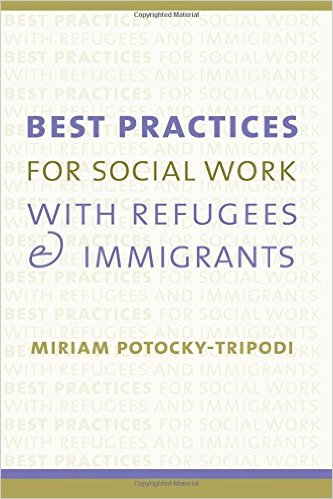Author: Miriam Potocky-Tripodi
Publisher: Columbia University Press – 538 pages
Book Review by: Paiso Jamakar
This review is being written in April of 2016, in the midst of massive inflows of hundreds of thousands of people (termed as ‘refugees’ by news media) from areas of the Middle East into European countries who could pose threats as future terrorists. Also, in the United States, the question of whether or not to allow the entry of thousands of people as ‘refugees’ has become a burning issue in the presidential debates.
This issue has angered Americans as the administration of Barack Obama has announced its intention of admitting up to about 10,000 people from abroad as ‘refugees’ even as his homeland security adviser has stated flatly that there is no method currently for checking the backgrounds of these people on whether or not they are potential terrorists.
Fourteen people were killed and 22 injured in San Bernardino, California on December 2, 2015 by two immigrants from Saudi Arabia, so the anger and the fear hold a strong basis for opposing entry of newcomers into the United States. Or into Europe as well, for reasons cited below.
This book was published in 2002, way before concerns arose about foreigners, coming in legally or illegally, into the borders of any country, and carrying out terrorist acts such as killing innocent people, individually or en masse.
Today terrorism would be a major issue to address if a book were to be written about social work with refugees, even if the motive was purely humanitarian. So let us imagine we are in times before the November 2015 Paris terrorist attacks killing 130 people and the March 2016 Brussels terrorist attacks killing 30 others.
Let us take a look at the contents of this book from a purely social work standpoint. It is organized into two main Parts and ten chapters which we provide below to give you a broad overview:
- Part I – Context for Social Work with Refugees and Immigrants
- Introduction
- Immigrants and Refugee Policies
- Service Delivery Systems
- Part II – Best Practices
- Culturally Competent Social Work Practice
- Health
- Mental Health
- Family Dynamics
- Languages, Education, and Economic Well-Being
- Interethnic Relations
- Summary and Conclusions
If there is a single important ‘lesson’ once can learn about social work helping refugees and immigrants, it is this: one must make the effort to understand the unique set of characteristics about their culture. When you read the Preface by the author – Prof. Potocky-Tripodi – you will immediately grasp the reason why this is so critical.
These are probably the main theses of this unique book:
- New immigrants are confronted by barriers of these types – cultural, linguistic, political, and socioeconomic – and in order to live satisfying and successful lives, they must overcome such obstacles.
- Until they go past their challenges they face in their new environment, they will experience the problems of alienation, anxiety, depression, grief, and even post-traumatic stress disorder (PTSD).
Part I lays the groundwork for the types of social work and services the immigrants can benefit from, by describing the general nature of the immigrant group, and the specific policies and actions designed to help them.
Part II first targets the problem areas common to immigrants including refugees, then discusses a number of techniques for assessment and intervention. The techniques are empirically-based, take a pan-cultural approach, and lay out the most practical best practices to meet the pressing needs of the immigrant refugees.
There are few books out there, that are focused on social work involving immigrants, particularly refugees, and this is an excellent one.
Author:
Miriam Potocky-Tripodi is associate professor in the School of Social Work at Florida International University.







